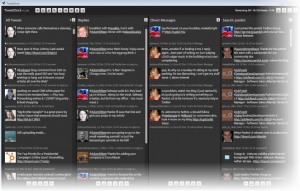May 27, 2008 by Adam Blitzer
There’s been a lot of talk lately on how social networking websites have become a popular way for B2C companies to engage their consumers while gathering feedback on their products. As B2C companies start to jump on this bandwagon, marketers question the validity of social networking in the B2B context. Undeniably, word of mouth is a powerful marketing tactic: a recent study by market research firm Keller Faye Group concluded that it was the leading influencer of business purchase decisions. Which leads us to ask how social networking websites can be used to facilitate two-way dialog in such a way that replicates word of mouth on a grander scale.
An argument against the use of social networking in B2B is that this business model does not allow for the same kind of “buzz” around a brand as in the B2C model, which can leverage the power of viral campaigns. For these to work, the initiative must excite passion on a wide scale - a prerequisite that is not consistent with a B2B product. It is safe to say that YouTube videos, dancing elves and other character personalization games would not be a fit with the B2B model. However, to say that social networking would not benefit these companies would be neglecting the opportunities that exist when you facilitate a dialogue among your customers. Granted, the conversation will take place among fewer individuals, whose similarities will lie not in their personal passions but in their business tasks. It’s the same idea, though: through a web-based dialog customers are simultaneously interacting with your brand while providing a large-scale, low-cost online focus group.
The question becomes where and how to create a platform for this conversation. This post from Barry Hannigan’s blog gives examples of how larger technology companies have implemented social media into their corporate websites, facilitating knowledge exchange through an internal platform. By contrast, other B2B firms place content on websites geared towards social networking, such as ITtoolbox Community Hub, where IT professionals can discuss different vendors through blog posts, topic-based groups and online forums. Should you decide that an external approach would be more appropriate for your company, Rob Murray’s article on SearchEngineLand.com gives guidelines for participating in social networking sites.
Whether your company decides to facilitate a dialog internally through your own website or through an external social network - the key is to leverage the ability of this new technology to generate user feedback. Never before have such large scale consumer research opportunities been available at such a low cost, and B2B firms should latch onto this trend while it still represents a competitive advantage, rather than a necessity for their company’s survival. Even though social networking will never mean the same thing as it does for B2C companies and we’ll never hear of Cisco-Ize Me, there are still great opportunities to improve your company by learning what it is your customers are talking about.


